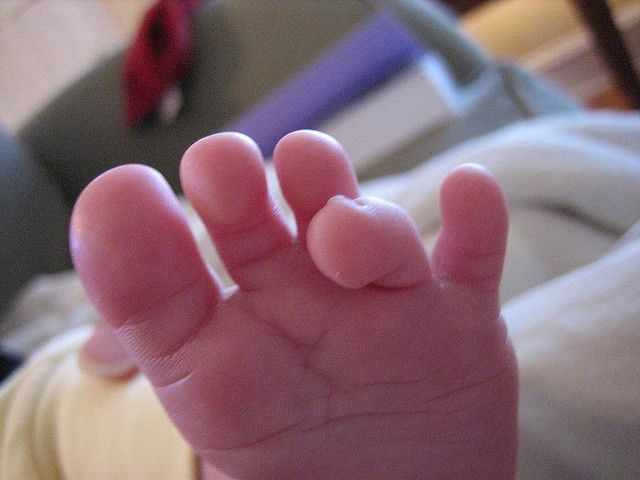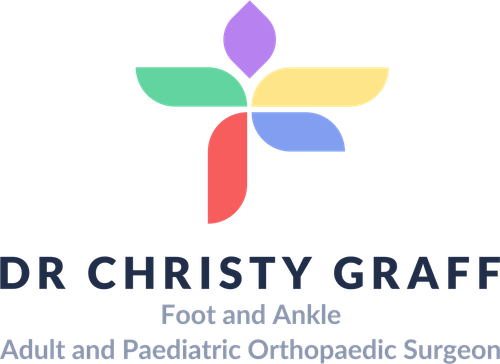Curly Toes
Curly Toes Information Sheet
What is a Curly Toe?
A curly toe is a condition where one or more of the lesser toes (toes 2-5) bend under themselves, often curling downwards and sideways. This happens because of tightness in the tendons that control the toes. Most commonly, the third, fourth, or fifth toes are affected. The toes may overlap or press against neighbouring toes, giving a “clenched” or “hooked” appearance.
The condition is usually noticed in childhood. While many cases are mild and cause little trouble, some people experience pain, corns, calluses, or difficulty wearing shoes comfortably.

Impact of Curly Toes on Anatomy and Health
The main structure involved in curly toes is the long flexor tendon. This tendon runs underneath the toes and is responsible for bending them. When the tendon is too tight, the toe is pulled downwards and inwards. Over time, this can affect the bone and result in a stiff deformity, often requiring assessment and management by an experienced Orthopaedic Surgeon in Adelaide.
Risk Factors for Curly Toes
Curly toes can affect anyone and are part of the genetic makeup. Risk factors include
- Family history: Having a parent or sibling with curly toes increases the likelihood of inheriting the same condition.
Causes of Curly Toes
The most common cause is a contracture of the flexor tendons in the foot. This simply means the tendons that bend the toe are too tight, pulling the toe down and under.
Other factors include:
- Genetics: Curly toes often run in families.
- Abnormal tendon balance: If one tendon is stronger than its opposing tendon, the toe may gradually curl.
Symptoms of Curly Toes
Not all cases of curly toes cause problems. When symptoms do occur, they may include:
- Visible curling: The toe bends downwards and sideways, often underriding neighbouring toes.
- Pain or tenderness: Especially when wearing shoes or walking.
- Skin irritation: Corns, calluses, or blisters from rubbing against footwear.
- Toe stiffness: The toe may be difficult or impossible to straighten by hand, especially as patients get older
- Nail issues: Pressure on the toenail may cause discomfort or ingrown toenails.
Prevention of Curly Toes
Curly toes are usually something people are born with and not preventable.
Types of Curly Toes
Curly toes can be classified based on how flexible the deformity is:
- Flexible curly toes: The toe can still be straightened by hand, and this type is more common in children.
- Rigid curly toes: The toe becomes stiff and fixed in position. This is more likely to occur as children get older and are more difficult to treat.
Stages of Curly Toes
Curly toes are usually flexible at birth and not problematic. In toddlers, they may improve. If the toe is underriding at a school age, it will likely continue to underride and begin to stiffen as the child grows.
Diagnosis of Curly Toes
Diagnosis is usually straightforward and made during a physical examination. A typical assessment may include:
- History: Asking about when the toes were first noticed, whether there is pain, and if the condition runs in the family.
- Physical examination: Toes will be assessed as to which toes are affected, whether the curl is flexible or rigid, and if there are skin changes such as corns or calluses or nail changes
- X-rays: Rarely needed, but may be used if surgery is being considered, or to rule out other conditions like arthritis or fractures.
Most cases can be diagnosed without complex tests, simply by looking at the foot and gently moving the toes.
Treatment of Curly Toes
Treatment depends on the severity of symptoms, the patient’s age, and whether the toes are flexible or rigid.
Non-surgical treatments (often tried first):
- Observation: In children, curly toes often improve on their own by age 5–6, so treatment may not be necessary unless symptoms develop.
- Footwear modification: Wearing shoes with wide and tall toe boxes to reduce pressure.
- Padding or orthotics: Special pads or insoles to reduce rubbing and relieve pain.
- Toe exercises and stretches: Stretching the tendons and strengthening the toe muscles can improve flexibility.
- Taping or strapping: Temporarily straightening the toe using tape or splints.
Surgical treatments (for persistent or severe cases):
- Flexor tenotomy: A simple procedure where the tight tendon is released, allowing the toe to straighten. This is often done as day surgery and is highly successful in younger children.
- Other corrective surgery: In rigid cases, procedures may involve pinning of the toe or fusion of the joints.
Surgery is usually considered when conservative measures fail and the condition causes significant pain or difficulty with footwear.
What if Curly Toes are Left Untreated?
The outcome of untreated curly toes depends on the severity of the deformity.
- In children: Many cases resolve on their own, so no harm may come from waiting and watching until school age.
- In mild adult cases: The main issue may only be cosmetic, with little or no pain.
- In moderate to severe cases: The deformity can worsen, leading to corns, calluses, chronic pain, and difficulty finding comfortable shoes. The toe may become stiff and fixed, making non-surgical treatment less effective.
In the long term, untreated severe curly toes can alter your walking pattern and place stress on other parts of the foot, ankle, and leg. This may cause secondary problems, such as joint pain or imbalance.

